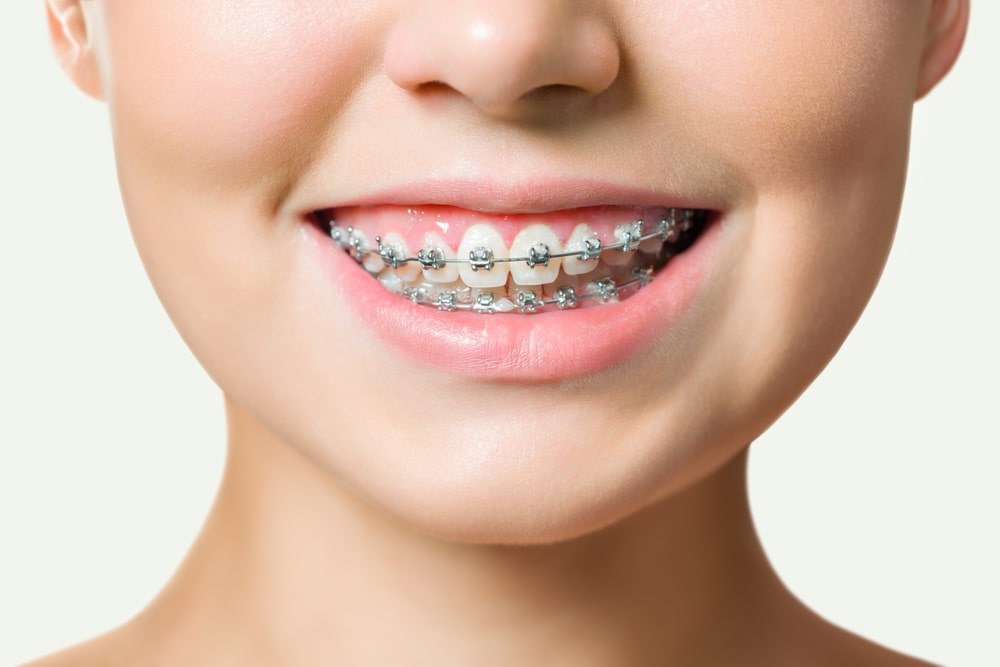Overview
Dental braces are wire-based appliances that orthodontists use to correct crowded and mal-aligned teeth or jaws. Many who need dental braces get them in their early teens. However, adults can also benefit from wearing braces. The goal of dental braces is to properly align your teeth and jaws to provide an excellent bite and pleasing smile.
For minor corrections, a choice may be a series of made-to-order, removable braces known as clear aligners or “invisible braces.” If you are considering clear aligners versus fixed braces, inquire about the price and the pros and cons according to your specific needs. Many people need mounted braces to correct their dental issues.
About Dental Braces
Dental braces provide corrective treatment for:
- Overcrowded or crooked teeth
- Too much area between teeth
- Upper front teeth overlap the lower teeth excessively – either vertically (overbite) or horizontally (overjet)
- Upper front teeth that bite behind the lower ones (underbite)
- Other jaw arrangement issues that cause an uneven bite
Proper alignment of your teeth and jaws might improve not only your looks but your oral health and the way you bite, chew, and speak.
Risk Factors Associated with Dental Braces
Wearing dental braces is mostly a safe procedure. However, there are some risks.
Short-term risks
- Braces create little areas around your teeth that may lodge food particles and promote bacteria-filled plaque deposits. Failure to get rid of the deposits of food and plaque will lead to:
- Loss of minerals in your teeth’s outer enamel surface might leave permanent whitish stains on your teeth.
- Tooth decay (cavities) and gum diseases.
Long-term risks
Long-term risks might include:
- Shorter root lengths: During tooth movement, some bones within the path of the moving tooth dissolve while new bone is laid behind it. So also due to pressure exerted by the braces , regression of the root leads to shorter root length.
- Permanent loss of anatomical structure length: This might occur throughout the process and may lead to less stable teeth. However, this does not cause any issues in most cases.
- Loss of correction: If you do not follow your orthodontist’s directions carefully once your braces are removed and use a tool referred to as a retainer, you will lose some of the correction gained by wearing your braces.
When to See a Doctor
To reduce the danger of damaging your teeth and braces:
- Cut down on sweets and starchy foods and beverages that will contribute to plaque formation and dental caries.
- Brush fastidiously, ideally once after every meal, and use a soft-bristled brush. If you cannot brush your teeth once after every meal, rinse your mouth well with water.
- Rinse thoroughly to remove all particles out of your braces. Look in the mirror to ascertain your teeth are clean.
- Use a halide rinse if prescribed by your dentist.
- Floss between braces and beneath wires using a floss bodkin. Your dentist might recommend a tiny toothbrush to wash between braces and wires.
- Avoid sticky foods like chewing gum, chewy candies, caramel, and toffee. They will pull out brackets, bands, and wires.
- Avoid hard or firm foods like ice, raw carrots, hard candies, popcorn, and nuts. They will break parts of your braces.
- Visit your dentist for checkups and clean up as often as your dental practitioner recommends to keep your teeth and gums healthy.
- Follow your dentist’s directions as lack of compliance will extend the time required for teeth correction and increase the possibility of complications.
Request an Appointment at Apollo Hospitals
Call 1860-500-1066 to book an appointment
Preparing for the Test
Sometimes, tooth alignment issues crop up as children grow and reach puberty. However, these problems become more apparent once the permanent teeth begin to grow from the gums. Your dental practitioner might suggest waiting till most teeth have come through before giving you braces. Most kids get braces between the ages of eight and fourteen years when their facial bones are still growing, and their teeth are easier to maneuver.
Preparation for braces usually involves:
- Oral exam: Your dental practitioner conducts a full exam of your teeth, jaws, and mouth.
He will get a series of X-rays to see the position of your teeth. The most common is the bird’s eye X-ray that shows all the higher and lower teeth in biting position and any teeth still developing at intervals between the jaws. Special head X-rays additionally might facilitate confirming the dimensions, position, and relationship of jaws with teeth. These 3D X-rays provide a better picture of the position of your teeth.
- Plaster models: You may be asked to bite into a soft material that remains on your teeth for several minutes to form an impression. A plaster model of your teeth (dental cast) is made from this impression, and the dental practitioner evaluates your bite. In some cases, this dental cast could also be scanned into a digital format for additional analysis or treatment selection.
- Potential tooth extraction: If your mouth is extremely overcrowded, there could also be restricted or no area within the jaw for all your teeth. Your dental practitioner might suggest removing one or more permanent teeth to create space so as to arrange the mal-aligned teeth in an aesthetic and functional manner. This enables the teeth to fit better.
- Other procedures: In severe cases, where tooth movement alone cannot correct a bite that is considerably out of alignment, jaw surgery is needed together with dental orthopedics.
After your dental practitioner has evaluated your teeth and jaws, he or she customizes a treatment plan for you. This usually involves using mounted braces
What to Expect
Fixed dental braces generally have these components:
- Brackets are connected to the surfaces of the teeth. Or they will be connected to your back teeth, concealing them from view. However, this makes them a bit tougher to access. Brackets are often fabricated from chrome steel, ceramic (clear or tooth-colored), or alternative materials. Modern metal brackets are smaller and not noticeable.
- Ring-like bands encircle the molar teeth. Before bands are applied, the area is prepared by inserting tiny rubber bands (spacers) between the molar teeth. These bands’ squares are measured and fabricated from chrome steel or metallic elements. A buccal tube connected to the band of the last molar holds the top of the connecting wire in place.
- A flexible wire (archwire) that connects all the brackets and bands. The archwire controls the movement of the teeth.
Conclusion
On average, most people wear full braces for one to three years. Retainers could also be worn to make sure that the ultimate results remain stable.
The person wearing the braces has a crucial role to play in the treatment’s success. Follow the orthodontist’s directions, particularly throughout the retention period. At the final stage of the treatment, it is vital to wear the retainer as directed or risk losing the advantages gained by wearing braces.
 Verified By Dr Srinivas Gadipelly August 3, 2023
Verified By Dr Srinivas Gadipelly August 3, 2023
